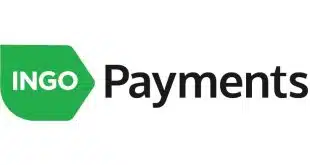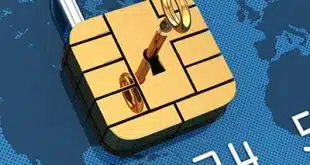Remember Secure Vault Payments, the automated clearing house network’s 7-year attempt at capturing some of the booming e-commerce and online bill-payments volume? After failing to catch on with banks, billers, and merchants, SVP is back in the shop for retooling.
n
n
Meanwhile, the company in charge of operating the SVP switch, eWise Group Inc., retains that switching role but has given up the job of recruiting SVP participants. Instead, eWise is developing a new online ACH payments service called PayWithMyBank.
n
n
SVP’s greatest selling point, the fact that its transactions are ACH credits, apparently is its biggest problem, too. ACH credits push so-called “good funds” into the payee’s account and are a bit less risky than ACH debits, which pull funds from the payor’s bank account. ACH governing body NACHA first envisioned SVP, originally known as “credit push,” back in 2006 as an alternative for consumers reluctant to use credit cards for one-time Internet purchases or bill payments.
n
n
But, from an operations standpoint, making ACH credits work for e-commerce is easier said than done, especially in the U.S. banking industry with its thousands of institutions, according to Alexandre Gonthier, chief executive of Redwood City, Calif.-based eWise. “It requires deep integration into a bank’s IT environment,” Gonthier tells Digital Transactions News. “You have disparate, fragmented IT systems at the back end as well.”
n
n
Gonthier says that chief information officers at banks constantly delayed SVP-development projects “into the next quarter.” He says dealing with the CIOs “was predictably unpredictable.”
n
n
George Throckmorton, managing director of advanced payment solutions at Herndon, Va.-based NACHA, basically confirms Gonthier’s take. Banks, he says, have been putting more effort lately into complying with new regulations and tending to more urgent matters than SVP.
n
n
“I would say the best description for that is a shift in priorities,” Throckmorton says. [Banks] “have to determine where they’re going put their resources. It wasn’t unsatisfaction [with SVP].”
n
n
The numbers also show this priority shift. SVP once had 35 to 40 banks committed to offering the service, but now their ranks are down to just a few, notably U.S. Bancorp and PNC Bank. Billers and merchants, which for a time fluctuated in the 15 to 20 range, mostly educational institutions and public agencies, now number about half that, the most prominent being the University of Wisconsin-Stout. “It seemed to be not scaling at the pace that is economically viable for anyone,” says Gonthier.
n
n
Unable to ascertain when it would get an acceptable return on its SVP development efforts, eWise over the past year gave the network-development aspect of the project back to NACHA. What’s next for SVP isn’t exactly clear.
n
n
“We’re taking a look at the problems Secure Vault Payments is trying to solve, working on the functionality,” says Throckmorton. He adds that NACHA plans to parcel out to banks the recruitment functions formerly handled by eWise.
n
n
“It’s not shocking that it’s been difficult to create this network, this chicken-and-egg thing,” says Throckmorton, who nonetheless thinks that SVP’s time will come. “We’re seeing continued innovation in the industry. There will be more and more interest in ACH credit origination. I think this is kind of a long-term evolutionary approach.”
n
n
NACHA, through operator The Clearing House Payments Co. LLC, offers another ACH-credit service for bill payments called EBIDs, which has about 190 billers in its directory and has “very, very good volume,” says Throckmorton.
n
n
Transactions for both SVP and EBIDS use NACHA’s CIE code, for customer-initiated entry, but they serve different markets, according to Throckmorton. EBIDS serves the bank-based bill-pay sector while SVP, in addition to enabling retail Web payments targets so-called biller-direct payments where the customer goes to the biller’s site to pay.
n
n
Meanwhile, eWise is concentrating on its PayWithMyBank service, which is under development. The service will use an ACH debit model, which Gonthier says is far easier to implement than ACH credits, to enable consumers to buy on the Web using their online-banking credentials without leaving a merchant’s or biller’s site.
n
n
The attraction for consumers will be a simple payment process with minimal data entry, according to Gonthier. He says eWise has designed a number of account-authentication and risk-management systems for the new service, which he says could reach more than 80% of U.S. online banking accounts in a year.
n
n
Gonthier hopes to have up to 20 e-commerce merchants, utilities, and non-profits signed up by year’s end. “The pipeline is full,” he says. Early adopters include home-furnishings retailers Stacks and Stacks and Homeclick LLC.
n
Merchant pricing is 0.9% of the sale plus 30 cents, which Gonthier says is only about one-third the cost of a credit card or PayPal Inc. transaction.







